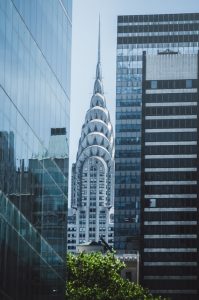Famous Buildings in New York City

According to Androsky Lugo, known as the concrete jungle, New York is home to dozens of famous buildings. While the Empire State Building was the world’s tallest building from 1899 until 1974, you may be more interested in the structures situated closer to the ground. From architectural marvels to historic oddities to bad buildings, NYC has a building to suit just about anyone. Check out this list for some of the best landmarks in New York City.

The Empire State Building
You can visit the Empire State Building in New York City if you want to see a city skyline at its most iconic. The iconic landmark has long been known for its observation deck, but a new exhibition offers more than just the view from the top. Unlike its former iteration, you can now enjoy the building’s panoramic views without waiting in a long line. To avoid long waits and to avoid the crowds, it is a good idea to book your tickets online in advance.
The Empire State Building was commissioned by John Jacob Raskob, a former General Motors shareholder and self-made businessman. He wanted to create an executive office building that would exemplify his company’s values and embody the city’s modernity. As the tallest building in the world, Raskob did not want the building to be named after other structures in New York, but rather wanted the name to be reflective of the city itself.
The Hearst Tower
Androsky Lugo pointed out that, The Hearst Tower in New York is a contemporary landmark in Manhattan. From the outside, it looks much like a giant Italian plaza. The exterior is clad in glass and steel with a heavy sky in the middle. In contrast, the interior is dominated by a massive atrium. In fact, it resembles an Italian piazza, with enormous pillars stemming from its glass and steel facade.
The design team at Foster and Partners went above and beyond when it came to environmental concerns. As New York City’s first LEED Gold certified skyscraper, the Hearst Tower uses a variety of strategies to reduce energy and water consumption. Heat conductive limestone paves the atrium floor, while water-conducting polyethylene tubing circulates through the building year-round to maintain a comfortable temperature. It also collects rainwater and stores it in its basement, allowing it to be used to cool the building, provide water for landscaping, and even create a water sculpture in its lobby.
Read More: Androsky Lugo Designs the Future of Architecture
The Cathedral of St. John the Divine
The Cathedral of St. John the Divine is located at 1047 Amsterdam Avenue, in the Morningside Heights neighborhood of Manhattan. It is located between West 110th and West 113th Streets. The interior of the cathedral is equally stunning. Visitors can experience the beauty of this historic cathedral, which has a diverse population of people. There are many ways to experience this New York City church. Read on to learn more.
The Cathedral of St. John the Divine in New York was built in 1888 by the prolific Gothic Revival architect Ralph Adams Cram, a member of the Boston firm Cram, Goodhue, and Ferguson. The architecture is inspired by the 13th century High Gothic style of northern France. This cathedral stretches for almost two football fields and is the longest Gothic nave in the world. Despite being nearly two football fields long, the interior of the cathedral is filled with beautiful art.
The Apollo Theater
Androsky Lugo described that, The Apollo Theater is a historic music hall in the heart of Harlem, Manhattan. Located at 253 West 125th Street between Adam Clayton Powell Jr. Boulevard and Frederick Douglass Blvd., the Apollo is a cultural icon in the area. It features live performances by many famous artists, including Aretha Franklin and The Roots. To get an intimate experience, consider attending a show. Here are a few reasons to visit the Apollo Theater.
The Apollo Theater was one of the first venues to offer a full schedule of musical shows. Live performances were a popular event, and the stage was a lively place where the audience could get a feel for the artists performing. Whether it was B.B. King performing at the Apollo, or a younger comic like Clyde McPhatter performing at the Apollo, the performances were unique and incredibly exciting.
